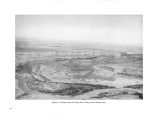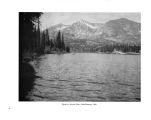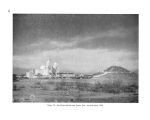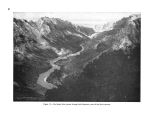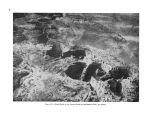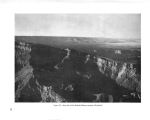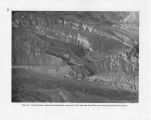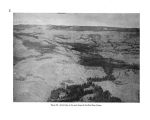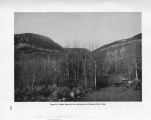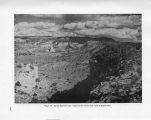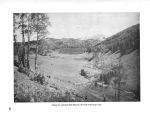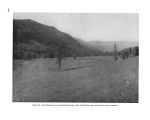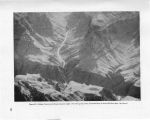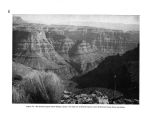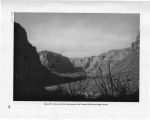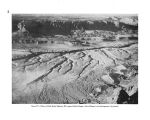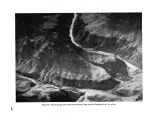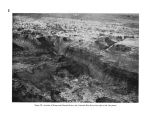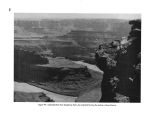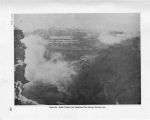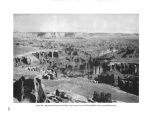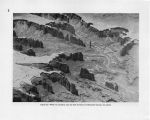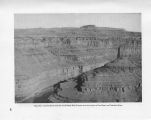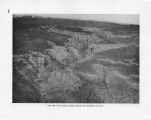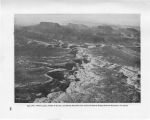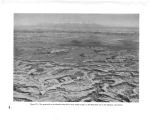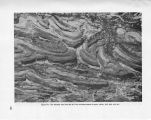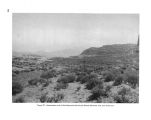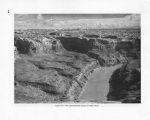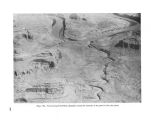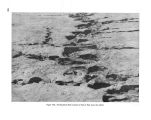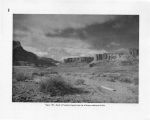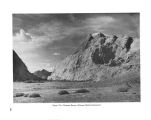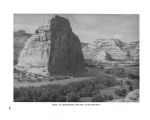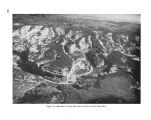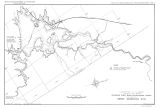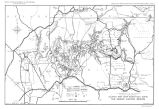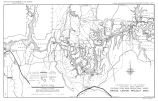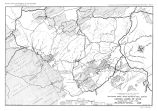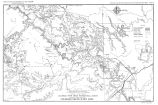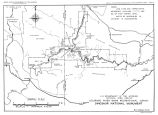| OCR Text |
Show surrounding shrubbery. Thus the desert could hardly reverse its present trend within the next 50 years even if actually encouraged. The fading picture of primeval beauty and abundance has not been confined to the valleys and deserts. The vegetation of the mountains originally was much more luxuriant and its resistance to grazing was greater, because the more abundant rainfall gave it greater vigor. However, the process of deterioration has been the same, although it has taken a little longer. In 1847, grass in some canyons of the Wasatch Mountains in Utah was from 6 to 12 feet high, and in some places the first explorers found themselves unable to penetrate the thickets which it formed. Today, the grass in these places often is less than 6 to 12 inches high, offering no obstacle to travel in any direction. Great numbers of unpalatable weeds and shrubs have replaced the original forage, of which many of the best kinds are on the verge of extinction. 25 In 1844, Mountain Meadows, on the summit of the Colorado River- Great Basin divide in southwestern Utah, was a beautiful valley of green grass that extended for miles, bounded by pinon- and juniper- covered hills. By 1877, the grass had been mostly replaced by desert shrubs as a result of sheep 25 Cottam and Evans, 1945, p. 178. Figure 31.- Desert bighorn in Lake Mead Recreational Area. 63 grazing, and the appearance of the landscape was so greatly altered that landmarks of 20 years before could no longer be identified. Today the " meadow" is dry, and gray with sage. Great gullies have drained away the water, so that even if ungrazed, the grass could not come back. Junipers have been steadily invading the site of the vanished meadow from the surrounding hills since 1862.26 These conditions are fairly typical of changes which have occured throughout the mountains of the Colorado River Basin. Animal life in the mountains has undergone a corresponding decrease, as a result of direct persecution, as well as from forage and habitat depletion. In primitive times, elk were abundant in nearly all the mountains and foothill valleys of Wyoming, Colorado, northeast Utah, central New Mexico, and northern Arizona as far west as the Hualpai Indian Reservation. A very trustworthy observer who has lived in the Ashfork region since 1896, says there was one old Merriam bull elk that watered with the cattle north of Ashfork as late as 1914. I could never question his record as he is a most conservative and careful reporter. He gave me a pair of Merriam horns a few years ago, one of two pair which he picked up in this same general area several years ago. 27 By 1910, they were nearly exterminated in the Colorado River Basin, but subsequently, determined efforts, particularly in Colorado, have restored them to part of their former range. When the first white settlers came, bighorn in great numbers seem to have occupied nearly every canyon, cliff, and mountain range of the Colorado River Basin, but they began to decline about 1840.28 By 1900, hunting, competition with domestic stock for the diminishing forage and water, changes in the type of forage plants, and diseases introduced by the domestic herds had reduced the bighorn to a dwindling fraction of their original numbers. Beaver, which had molded American history for a century in the well- watered lands to the east and north, were remarkably abundant even in the Colorado River Basin in primitive times. In 1825, 26 Cottam and Stewart, 1940, p. 624. 27 A. A. Nichol, letter, Dec. 29, 1945. 28 Seton, 1929, III, p. 532. |




























